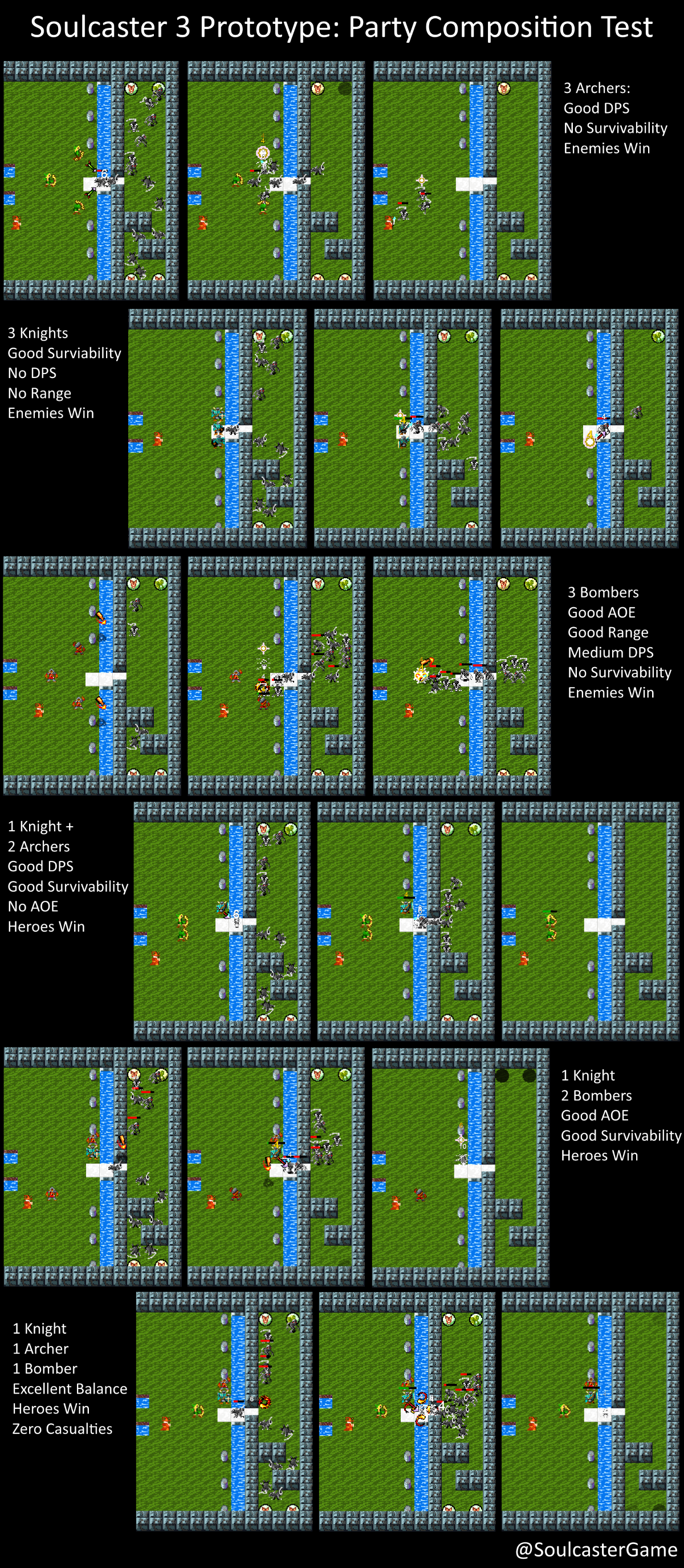Today’s goal was to balance the summons and basic monsters (rats and skeletons) to the point where a diverse party composition is more effective than only using one or two of the unit types.
This is not true in all situations: there are some layouts where three archers is definitely superior to any other combination–but there should be situations like this choke point where a variety of unit strengths wins the day.
For a refresher on what the units in Soulcaster do:
- Shaedu (green archer) does the most damage, but needs a clear line of sight to the target.
- Aeox (blue knight) does the least damage, but has very high HP and takes reduced damage. Melee only.
- Bloodfire (red bomber) can lob bombs over walls. They are weaker than Shaedu’s arrows against single foes, but because of a large blast radius, he can hit multiple enemies with each shot and decimate monsters when they group closely.
- Ranged units alone can deal good damage, but as soon as the enemies close the distance, they can’t survive at close range.
- A stack of three tanky units (knights) does a great job of keeping the choke point closed, Spartan army style, but simply can’t deal enough damage to survive the entire wave of enemies.
- Two of the ranged units combined with a single tank work well, but just barely–the line is broken just as the final monsters are taken out.

